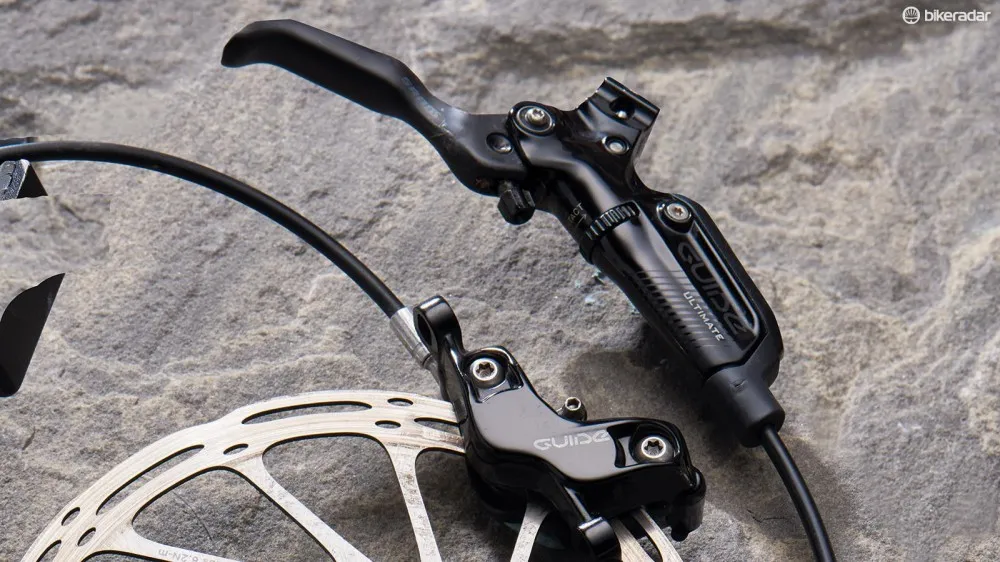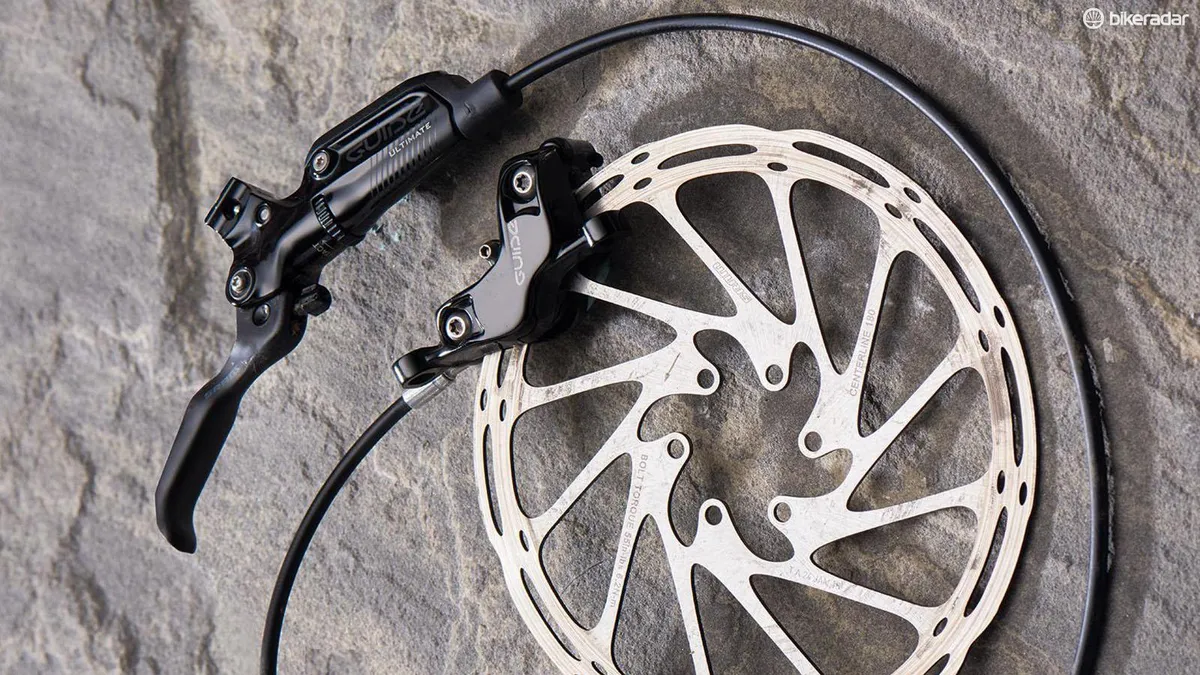SRAM isn’t mincing words when it comes to naming the top end version of the Guide brake, but it’s done more than throw exotic materials at the existing item. SRAM claims that the top Guide can cope with more braking heat and has a more consistent feel that ever before. Our experience on the trail would bear that out.
The changes themselves may seem small, but they all add up. Rather than the completely resin phenolic pistons used by the regular Guides, the Ultimate pistons use an alloy sleeve around a phenolic core. Tighter tolerances and a special finish means that they receive more lubrication from the DOT brake fluid. This helps them move more freely and ensures they retract properly each time, keeping lever feel consistent.
Other upgrades include more flexible seals, a wider caliper-channel for improved airflow and an alloy heat shield that helps reduce heat transfer from the pad to the hose side of the caliper. SRAM claim these help reduce the caliper’s running temperature by as much as 20°C when compared to the standard Guide. A carbon lever blade and titanium bolts are thrown in for good measure to up the bling and drop the weight. Our set weighed in at a respectable 830g for the pair including 180mm diameter ‘Centreline’ two-piece rotors.

The lever throw is short and the bite point fantastically predictable
SRAM’s Matchmaker clamp allows the brakes to sync with a Reverb seatpost and SRAM shifters too. It’s a neat system, especially as the shifter can be moved vertically or laterally on the handlebar to suit your personal preference. The bite point dial does its job, but is a little stiff to use, and some testers found the reach adjuster fiddly too.
On the trail, the first thing that struck us was the short lever throw and consistent bite-point, which allows a few millimetres of progressive and intuitive modulation. We set about putting them through the wringer on a range of testing descents from Wales, Scotland and even the Alps.
Throughout this abuse, the bite point and lever feel never changed significantly. Whether in the cold and wet of Wales, the filthy mud of the Tweed Valley, or the brake-burning, rocky descents of the Cairngorms, the lever bite-point remained just where we’d left it. This is probably due to the slippery alloy coated pistons, combined with the redesigned set of seals. Despite grim conditions and a melee of mud, all four pistons are still moving in-sync at the end of our extensive test period, giving a consistently crisp lever feel. The updates to the caliper seem to do their job too, as even when we got the brakes really hot on steep descents with continuous braking, the bite-point and lever feel was barely affected, and power remained pretty high.
For greater compatibility, the Ultimates use the same brake pads as the standard Guides and their predecessor, Avid’s Trail brake. However, these pads are thin; this means shorter pad life. When tackling steep descents with the more commonly fitted 180mm rotors, heavier testers found them just a touch lacking in outright power. With 200mm rotors fitted, most test riders found power and resistance to fade to be plentiful, even on long Alpine descents. For most, these brakes will prove more than a match for the steepest terrain, but the steepness of the price may prove more troublesome for most riders.


